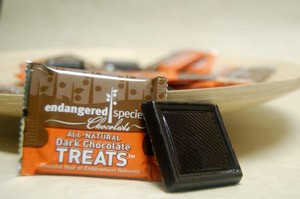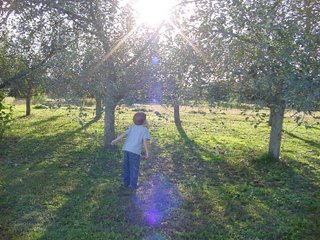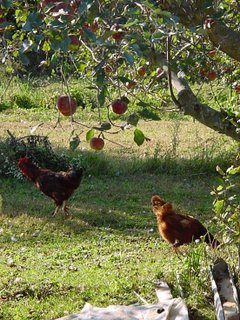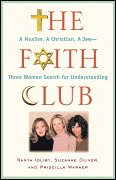The more I've researched, the more I've found how complicated the issue of responsible consumerism really is. I have some tips for how to do research on what you're buying, but I also want to make clear that I realize that it's not feasible to be perfect. In fact, we have very few "perfect" options. Even
Fair Indigo, whom I cited in my last post on this issue, takes flak for not revealing the source of their Fair Trade products. Mostly I think that's just a PR issue for competing retailers, and Fair Indigo has defended themselves well. If you're just looking for a good store or company to do everyday shopping with, IdealsWork.com is a good starting point. If you are trying to find one brand of something that you're going to buy a lot of, then that's the place to really dig deep. For example, after hours of research, we buy 99% of the kids clothes from
Hanna Andersson. When I was re-stocking my wardrobe, I bought new from amazing
Patagonia and also
Prana, and tried to buy things that weren't so fabulous company wise second-hand. We buy a lot of high end shoes, so I really did my research on those. If you tend to stick to one brand of beauty products, do your research. You get my drift. Now, some pointers for doing that research.
1. Google! Search the product name followed by "human rights", "labor practices" "factory" "working conditions". A lack of information is a good thing. If nothing comes up, make sure there isn't a higher up parent company. Merrell shoes, for example, is owned by Wolverine Worldwide. While nothing comes up for Merrell, Wolverine has a history of violations. I discovered that they have taken major steps to turn things around, which brings us to the next point.
2. Make sure you have the most recent information. I was dissapointed to see that a number of flags came up for violations from 2-6 years ago. A lot of this outdated information was on
Amnesty International's watch site. I personally felt that a lot of their information was really digging too far, and "eating our own", but they do have very thorough information. Further digging showed that things have really turned around. If you do find information on past violations, you'll have to dig deeper to see what they've done to correct things. Look for things like changes in CEO, using overseas watch dogs to monitor conditions, etc. Levi's used to be a major violator, but they have won awards for their turn around, and are actually going to be introducing an organic cotton line.
3. Stay away from China. Unfortunately, there's something to be said for buying Made in the USA, although that's not a guarantee of fair labor practices. (Just look at Walmart!) European companies are generally good on labor as well. Just make sure that their product is manufactured in Europe and their sourced items are clear too.
Ecco is a shining example. They own everything that goes into their shoes, right down to the farms where the leather is sourced. Look on their website and you will even find the addresses of all of their factories. Transparency is a good thing.
4. You get what you pay for. Even if something is expensive, do your research, but it tends to hold true. The fact of the matter is, the reason you can pay $1 for a bottle of shampoo is that someone got paid pennies to make it.
Aveda is another award winner for their natural sourcing and labor practices. They have extensive reports that even analyze their shortcomings. Will your shampoo cost you $32? Yes, but it was sourced sustainably and someone got paid fair wages to make it. The same is true all the way down the line. Learn to love more with less. Pay for equity and justice. Vote with your dollars.
So what if you go through all of these steps and either can't find the information or are concerned about violations? Contact the company. I have sent out a plethora of e-mails over the past weeks. Most I got a form response, and they basically said that they do their best. I trusted the ones that told me
how they make sure that their standards are met. I vetoes the ones that I got no response from. This isn't a foolproof way to do your research, but it's still important because the company hears that you care and are concerned about the issue. Especially if you are a devoted customer of a brand, make sure they know how important labor issues are to you--even if their record looks clean. The fact is, it is
hard for big companies to find fair labor, and only demand will increase supply at this point. Of course, buying second-hand is almost always responsible in every way imaginable, but not always an option.
We can't all be perfect, but we
can all make an effort to do our best to make sure that the world is what we want it to be. The first step is opening our eyes to the reality, the second is acting to change, and the third is speaking out. So please, take the time to do the research and make sure that your votes with your dollars are educated.
 Tempted by all of that chocolate this year? Don't forget that a lot of those "fun size" goodies laying around are made with cocoa harvested using child labor, in terrible conditions. Companies like Nestle, Hershey and Mars have agreed to work to eliminate child labor and slavery from their sourcing, but they continue to source from the Ivory Coast, where these problems are rampant, and continue to refuse to offer fair trade prices to their cocoa growers. You don't really want to eat something harvested by impoverished (and by some claims, enslaved) children, do you?
Tempted by all of that chocolate this year? Don't forget that a lot of those "fun size" goodies laying around are made with cocoa harvested using child labor, in terrible conditions. Companies like Nestle, Hershey and Mars have agreed to work to eliminate child labor and slavery from their sourcing, but they continue to source from the Ivory Coast, where these problems are rampant, and continue to refuse to offer fair trade prices to their cocoa growers. You don't really want to eat something harvested by impoverished (and by some claims, enslaved) children, do you?







